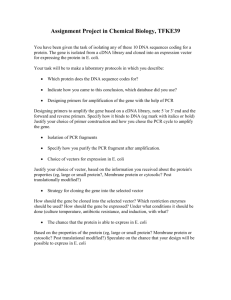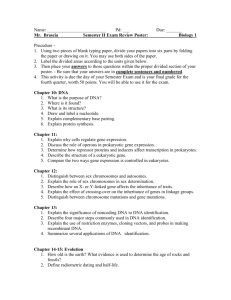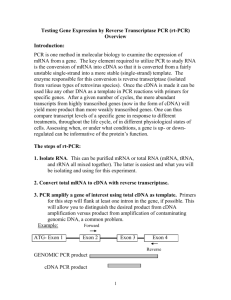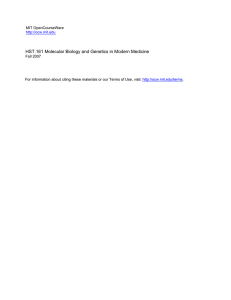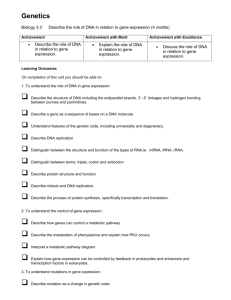Materials and Methods. (doc 44K)
advertisement
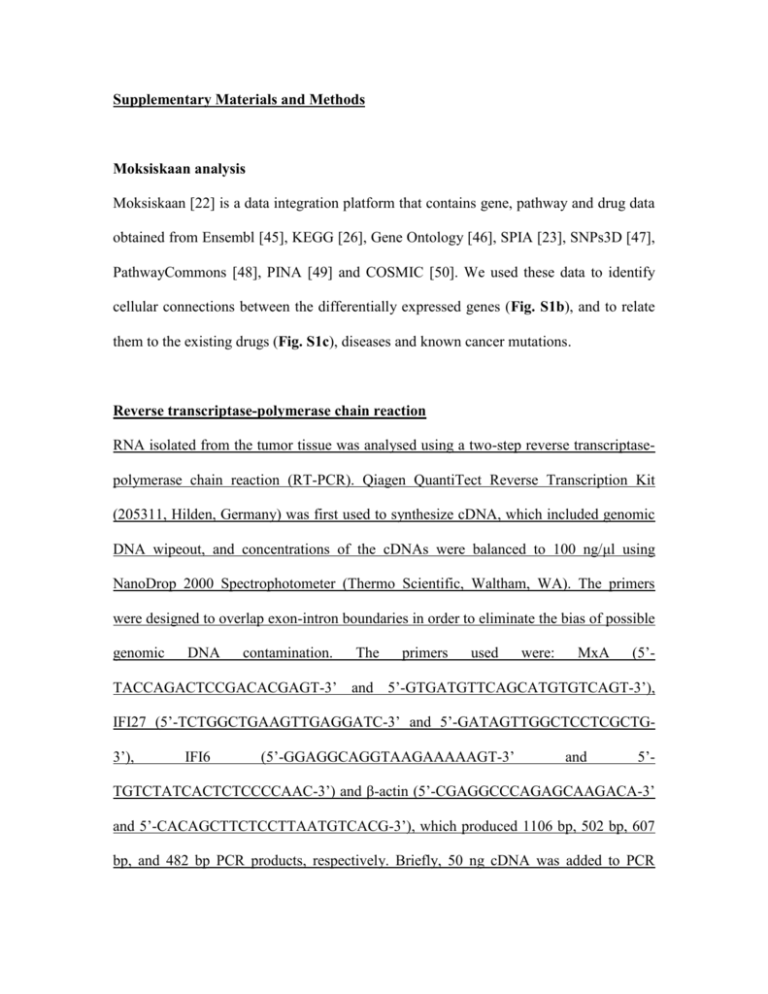
Supplementary Materials and Methods Moksiskaan analysis Moksiskaan [22] is a data integration platform that contains gene, pathway and drug data obtained from Ensembl [45], KEGG [26], Gene Ontology [46], SPIA [23], SNPs3D [47], PathwayCommons [48], PINA [49] and COSMIC [50]. We used these data to identify cellular connections between the differentially expressed genes (Fig. S1b), and to relate them to the existing drugs (Fig. S1c), diseases and known cancer mutations. Reverse transcriptase-polymerase chain reaction RNA isolated from the tumor tissue was analysed using a two-step reverse transcriptasepolymerase chain reaction (RT-PCR). Qiagen QuantiTect Reverse Transcription Kit (205311, Hilden, Germany) was first used to synthesize cDNA, which included genomic DNA wipeout, and concentrations of the cDNAs were balanced to 100 ng/μl using NanoDrop 2000 Spectrophotometer (Thermo Scientific, Waltham, WA). The primers were designed to overlap exon-intron boundaries in order to eliminate the bias of possible genomic DNA contamination. The primers used were: MxA (5’- TACCAGACTCCGACACGAGT-3’ and 5’-GTGATGTTCAGCATGTGTCAGT-3’), IFI27 (5’-TCTGGCTGAAGTTGAGGATC-3’ and 5’-GATAGTTGGCTCCTCGCTG3’), IFI6 (5’-GGAGGCAGGTAAGAAAAAGT-3’ and 5’- TGTCTATCACTCTCCCCAAC-3’) and β-actin (5’-CGAGGCCCAGAGCAAGACA-3’ and 5’-CACAGCTTCTCCTTAATGTCACG-3’), which produced 1106 bp, 502 bp, 607 bp, and 482 bp PCR products, respectively. Briefly, 50 ng cDNA was added to PCR mixture containing 0.2 μl DyNAzyme II DNA Polymerase (Finnzymes, Espoo, Finland), 1.5 μl 10x buffer (F-511; Finnzymes), 0.6 μl of 10 mM deoxynucleoside triphosphates, 1 μl of each 10 μM primer in a final volume of 15 μl. The thermocycler conditions used were 54°C for 30 min for reverse transcription, 95°C for 15 min for activation of the DNA polymerase, and then 35 cycles of 94°C for 45 s, 54°C for 45 s for annealing, and 72°C for 45 s, followed by an extension of 10 min at 72°C. PCR products were run on agarose gel. References 45. Hubbard, TJ, et al. (2009). Ensembl 2009. Nucleic Acids Res 37: D690-697. 46. Ashburner, M, et al. (2000). Gene ontology: tool for the unification of biology. The Gene Ontology Consortium. Nat Genet 25: 25-29. 47. Yue, P, Melamud, E, and Moult, J (2006). SNPs3D: candidate gene and SNP selection for association studies. BMC Bioinformatics 7: 166. 48. Cerami, EG, Bader, GD, Gross, BE, and Sander, C (2006). cPath: open source software for collecting, storing, and querying biological pathways. BMC Bioinformatics 7: 497. 49. Wu, J, Vallenius, T, Ovaska, K, Westermarck, J, Makela, TP, and Hautaniemi, S (2009). Integrated network analysis platform for protein-protein interactions. Nat Methods 6: 75-77. 50. Forbes, SA, et al. (2010). COSMIC (the Catalogue of Somatic Mutations in Cancer): a resource to investigate acquired mutations in human cancer. Nucleic Acids Res 38: D652-657.





